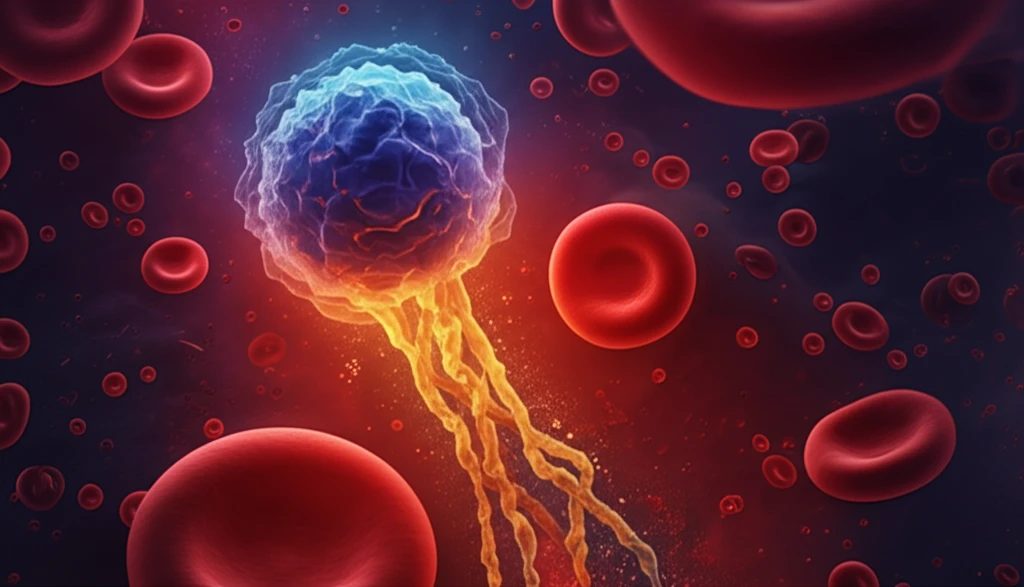
Decoding AML M3: A Comprehensive Guide to Acute Promyelocytic Leukemia
"Navigate the complexities of Acute Promyelocytic Leukemia (APL) with our in-depth review, covering diagnosis, treatment, and the latest genetic insights."
Acute Promyelocytic Leukemia (APL), a distinct subtype of acute myeloid leukemia (AML), is characterized by unique clinical and molecular features. Understanding APL is crucial for effective diagnosis and treatment, which have dramatically improved in recent years. This article provides a comprehensive review of APL, covering its subtypes, genetic underpinnings, diagnostic criteria, and current therapeutic strategies.
APL is specifically defined by the presence of abnormal promyelocytes in the bone marrow, often accompanied by a specific chromosomal translocation involving the retinoic acid receptor alpha (RARA) gene on chromosome 17. The most common translocation, t(15;17)(q24;q21), results in the fusion of the promyelocytic leukemia (PML) gene on chromosome 15 with the RARA gene. This PML/RARA fusion protein plays a key role in the pathogenesis of APL.
Historically, APL was associated with high mortality due to bleeding complications, but the introduction of all-trans retinoic acid (ATRA) and arsenic trioxide (ATO) has revolutionized treatment. These agents induce differentiation of leukemic cells and have significantly improved survival rates, making APL one of the most curable forms of acute leukemia.
Understanding APL Subtypes and Genetic Variations

APL is primarily classified into two main subtypes based on morphology: the typical or hypergranular form (AML M3) and the microgranular variant (AML M3v). AML M3 is characterized by promyelocytes with abundant granules and Auer rods, which are crystalline aggregates of myeloperoxidase. In contrast, AML M3v exhibits promyelocytes with minimal granulation and bilobed nuclei. The microgranular variant often presents with a higher white blood cell count and a greater risk of disseminated intravascular coagulation (DIC).
- PML/RARA fusion from t(15;17)(q24;q21)
- Variant translocations involving RARA with ZBTB16, NUMA1, or NPM1
- Additional chromosomal abnormalities (ACA) in some cases
Advances in APL Treatment and Monitoring
The treatment of APL has evolved significantly with the introduction of ATRA and ATO, which have replaced traditional chemotherapy-based regimens in many cases. ATRA induces differentiation of promyelocytes, while ATO promotes apoptosis. Combination therapy with ATRA and ATO has shown remarkable efficacy, leading to high rates of complete remission and long-term survival, particularly in low- to intermediate-risk patients. Regular monitoring with RQ-PCR is crucial for detecting minimal residual disease and preventing relapse.
